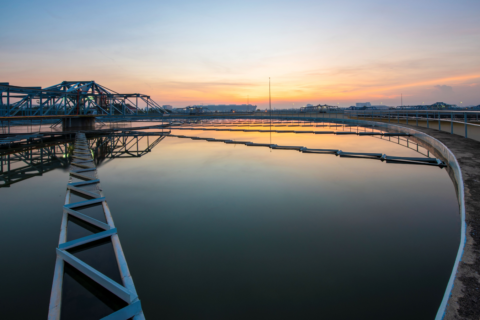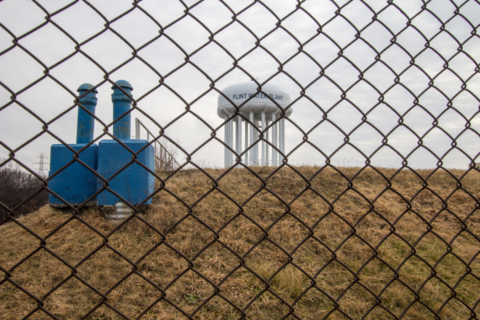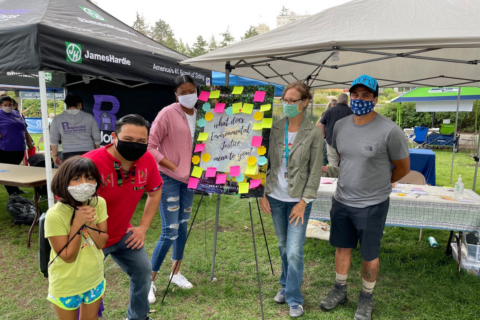If you look for it, you will find it. Per- and polyfluoroalkyl substances (PFAS), a class of over 9,000 man-made chemicals that were manufactured and used in a variety of industries around the globe, have made their way into communities around the country. This pollution is particularly common in communities near military installations or industrial sites.
Since NLC first adopted a resolution on PFAS in 2019 calling on Congress and the administration to holistically examine PFAS contamination and take comprehensive action to address the problem, there has been significant federal action across all branches of government. Local leaders must continue to make their voices heard to protect their communities and residents as federal policy is developed.
Congress: Bipartisan PFAS Legislation Drafted in Senate
In June, Senators Tom Carper (D-DE) and Shelley Moore Capito (R-WV), Chair and Ranking Member of the Senate Environment and Public Works Committee, released draft legislation to provide additional resources around PFAS at the federal, state and local levels.
While the draft legislation includes provisions to help prevent further pollution and contamination from PFAS and to remove PFAS chemicals from the environment, it does not include a key local government priority of municipal liability protection.
Local governments, including water utilities, municipal landfills and solid waste facilities, serve as passive receivers of PFAS chemicals that did not cause or contribute to contamination. Additionally, local governments, including municipal airports and fire departments, were required by federal law to use firefighting foam containing PFAS chemicals. As such, local governments should not be held liable for PFAS contamination or cleanup costs. Rather, polluters should pay for cleanup – not communities and taxpayers.
NLC is advocating that the PFAS legislation include a specific provision ensuring local governments are explicitly recognized as “passive receivers” of PFAS and are therefore provided a narrow exemption from liability under the Comprehensive Environmental Response, Compensation and Liability Act (CERCLA). This exemption language is necessary because of regulatory actions underway at the U.S. Environmental Protection Agency (EPA) that would expose local governments to legal and financial liability.
Separately, Senator Cynthia Lummis (R-WY) introduced legislation to provide liability protections for municipal water utilities, landfills, airports, and fire suppression entities. This legislation or similar language could potentially be included in a revised draft that the Environment and Public Works Committee considers.
Administration: PFAS Rulemakings Under Way
The EPA is taking several actions pertaining to PFAS – three rulemakings, in particular, are of interest to local governments.
The first is a proposed rule to establish a National Primary Drinking Water Regulation for PFAS and set a Maximum Contaminant Level at 4 parts per trillion for PFOA and PFOS under the Safe Drinking Water Act. NLC urged EPA to provide local governments with maximum flexibility, longer compliance timeframes and additional direct funding for local governments. A final rule is expected in January 2024.
Second, EPA is undergoing two separate rulemakings to designate some PFAS chemicals as hazardous substance under CERCLA. They are expected to release a final rule focused on PFOA and PFOS in February 2024. Additionally, EPA is taking comments through August 11 on an Advance Notice of Proposed Rulemaking on whether to propose to designate additional PFAS, including HFPO-DA (aka GenX), as hazardous substances under CERCLA.
In both of these rulemakings, NLC raised concerns about the far-reaching impacts the rulemaking will have on many municipal operations (see letters here and here). Designating PFAS chemicals as hazardous waste would trigger a number of new responsibilities on local governments to manage the substance in different media, as well as potentially opening local governments up to legal liability. These broad impacts have not been examined by EPA.
Although EPA has stated plans to develop a CERCLA PFAS enforcement discretion and settlement policy, the agency previously asserted it lacks sufficient authority to shield passive receivers from lawsuits brought by manufacturers of PFAS and other parties responsible for site contamination. As such, Congressional legislation to provide this liability protection is essential.
Courts: Settlement Activity with PFAS Manufacturers and Local Governments
There has recently been increased court action around PFAS including several significant settlements between large corporations and cities, towns and villages across the nation.
In early June, DuPont, Chemours and Corteva reached a $1.185 billion settlement with approximately 300 local water systems for expenses attributed to the cleaning of wells and aquifers. Later that month, 3M reached a $10.3 billion settlement with approximately 300 different water providers, including local governments in their capacity as water utility operators, in the claims that the company contaminated drinking water with PFAS in their communities. These proposed settlements are specifically regarding PFAS in drinking water and are not related to PFAS in wastewater or soil.
However, a coalition of numerous states have since filed an opposition and motion to intervene to the 3M settlement, arguing that the corporation is let off the hook too easily and opposes a settlement provision which shifts liability for contamination from 3M to water suppliers/utilities.
There have been an even larger number of claims brought forth by local governments and local utility and water systems against manufacturers who are alleged to be responsible for putting these chemicals into the environment. While these settlements are significant, they are nowhere near the cost that communities will face in remediating PFAS contamination or meeting forthcoming EPA requirements.
Most of the plaintiffs involved in each of these settlements are part of multidistrict litigation (MDL). MDL is a type of civil litigation that is used in the U.S. federal court system when claims (lawsuits) that allege similar damages, share common questions of fact and are directed against the same defendant are consolidated for trial into a single lawsuit brought before a single judge/court. While nearly 600 cases on PFAS responsibility and damages have been settled, there have been approximately 15,000 total claims in the MDL heard in the U.S. District Court for South Carolina, with hundreds of other cases scattered across the nation.
Local leaders interested in the PFAS settlements and court activity should consult with their legal counsel in a timely manner on whether and how to engage in any legal action.
Take Action
Local leaders can continue to make their voice heard as Congress moves forward with developing PFAS legislation. Tell your Senators that any PFAS legislation must include liability protection for local governments that neither caused nor contributed to PFAS contamination in their communities.











